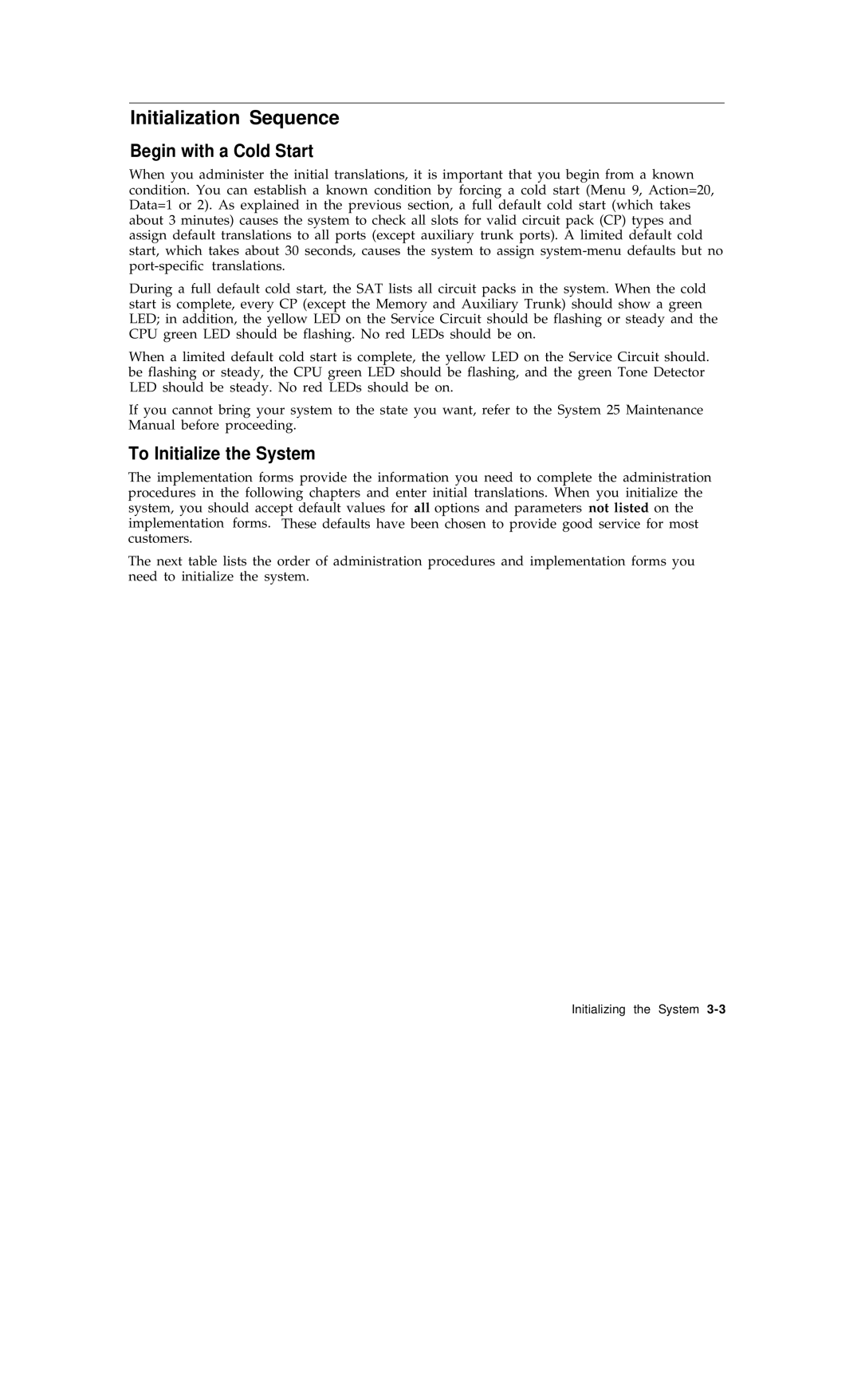Initialization Sequence
Begin with a Cold Start
When you administer the initial translations, it is important that you begin from a known condition. You can establish a known condition by forcing a cold start (Menu 9, Action=20, Data=1 or 2). As explained in the previous section, a full default cold start (which takes about 3 minutes) causes the system to check all slots for valid circuit pack (CP) types and assign default translations to all ports (except auxiliary trunk ports). A limited default cold start, which takes about 30 seconds, causes the system to assign
During a full default cold start, the SAT lists all circuit packs in the system. When the cold start is complete, every CP (except the Memory and Auxiliary Trunk) should show a green LED; in addition, the yellow LED on the Service Circuit should be flashing or steady and the CPU green LED should be flashing. No red LEDs should be on.
When a limited default cold start is complete, the yellow LED on the Service Circuit should. be flashing or steady, the CPU green LED should be flashing, and the green Tone Detector LED should be steady. No red LEDs should be on.
If you cannot bring your system to the state you want, refer to the System 25 Maintenance Manual before proceeding.
To Initialize the System
The implementation forms provide the information you need to complete the administration procedures in the following chapters and enter initial translations. When you initialize the system, you should accept default values for all options and parameters not listed on the implementation forms. These defaults have been chosen to provide good service for most customers.
The next table lists the order of administration procedures and implementation forms you need to initialize the system.
Initializing the System
